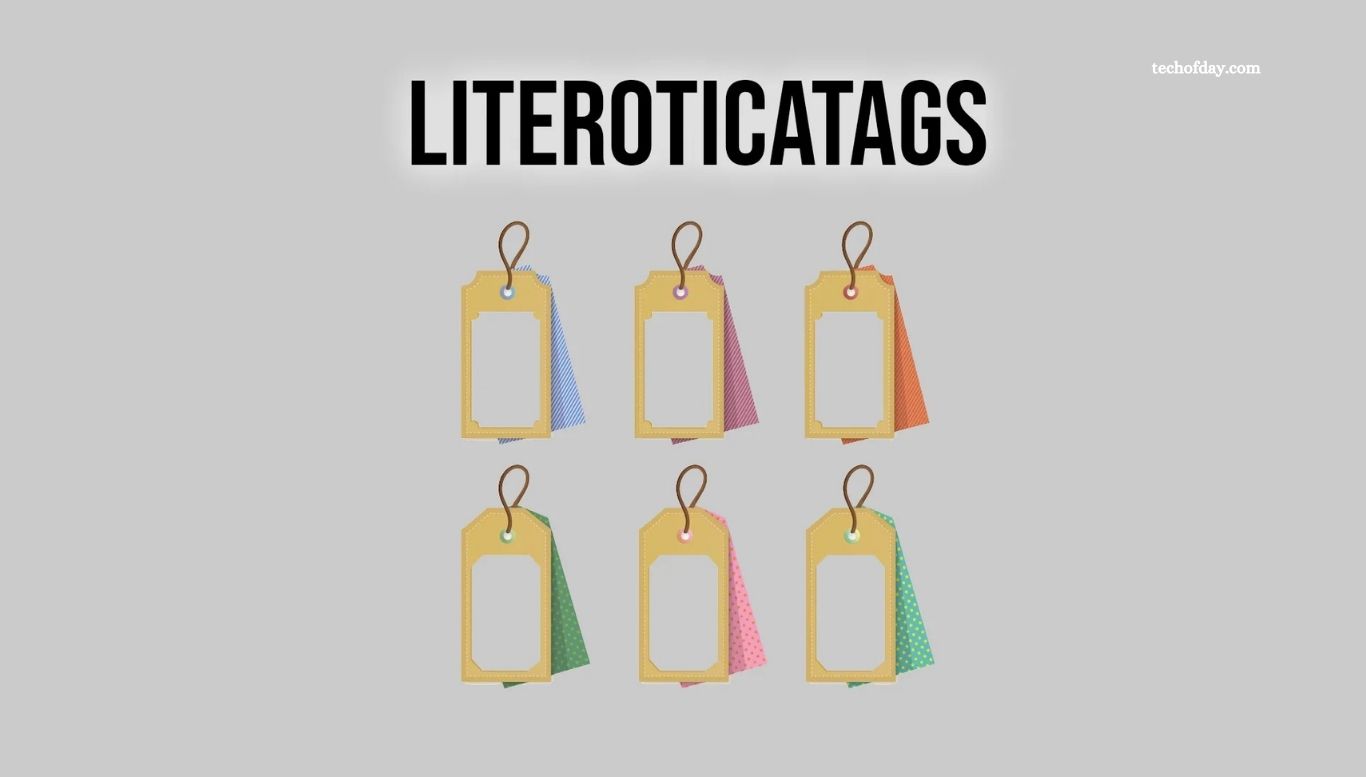Understanding Literotica Tags: Key Insights

Literotica, a leading platform in online erotic literature, allows writers to share creative stories and readers to indulge in their fantasies. A key feature enhancing the user experience is the tagging system that categorizes stories. This article explores the significance of Literotica tags, how to use them effectively, and what readers should keep in mind when browsing stories by tag.
Understanding Literotica Tags
At its core, a Literotica tag is a keyword or phrase that represents specific themes, genres, or elements within a story. These tags improve story discoverability and help readers find content matching their preferences. They cover a wide range of themes, from general categories like romance or BDSM to specific elements such as “first time,” “public sex,” or “sexual awakening.”
Read More: gocryptobet.com: Essential Information You Should Know
The Importance of Literotica Tags
Enhancing Discoverability
One of the primary benefits of Literotica tags is their ability to boost story discoverability. For readers, tags serve as navigation tools, simplifying the process of finding stories that align with their interests. In a vast library with countless daily uploads, a carefully selected tag can determine whether a story is read or overlooked.
Tailoring Reader Experience
Literotica tags also play a vital role in personalizing the reader’s experience. By using specific tags, authors signal the themes or topics their stories cover, helping readers assess if the content meets their expectations. This ensures greater satisfaction, allowing readers to filter out genres or elements they prefer to avoid, making their time on the platform more enjoyable and rewarding.
How to Use Literotica Tags Effectively
For Writers
If you’re an aspiring writer looking to publish your erotic stories on Literotica, mastering the use of tags is key to expanding your audience. Here are some tips:
- Be Specific: Instead of relying on broad categories like “erotic” or “romance,” be more specific about your story’s unique elements. For example, tags like “erotic college romance” or “BDSM fantasy” offer potential readers a clearer idea of what to expect.
- Limit the Number of Tags: Though Literotica allows multiple tags, avoid over-tagging. Too many tags can dilute your story’s focus and appear spammy. Select a concise set of tags that truly represent your narrative.
- Update Tags When Necessary: As your story evolves or you receive feedback, revisit your tags. If certain themes become more prominent, adjust the tags to reach the right audience.
For Readers
Navigating Literotica can be overwhelming given the vast amount of content. Here are some strategies for readers to make the most of Literotica tags:
- Utilize the Search Function: If you have specific interests, use the search feature with relevant tags to find stories that match your preferences. Tags like “group sex” or “age gap romance” can streamline your reading experience.
- Explore New Genres: Don’t just stick to familiar tags. Explore new genres that spark your curiosity. Literotica’s wide range of tags helps readers uncover stories they might not have otherwise considered.
- Check User Ratings and Reviews: Before diving into a story, review user ratings and comments. This can provide valuable insights into whether the story lives up to its tags and meets your expectations.
Popular Literotica Tags to Consider
To help kickstart your exploration or writing journey, here are some of the most popular Literotica tags currently in use:
- BDSM: This tag covers themes of bondage, discipline, dominance, submission, sadism, and masochism. Stories under this tag vary in their portrayal of power exchange dynamics.
- Interracial: Representing stories between characters of different racial or ethnic backgrounds, this tag often explores cultural differences and unique challenges in relationships.
- Incest: A controversial theme in erotic literature, this tag delves into forbidden family relationships. Due to its sensitive nature, readers often approach this content with caution.
- Fetish: This tag includes a wide range of specific interests, such as foot fetishism or latex clothing. Fetish stories explore the diverse desires of individuals.
- Vampire/Fantasy: Combining eroticism with supernatural elements, stories under this tag often feature vampires, werewolves, and other fantastical creatures, blending romance with adventure and intrigue.
Navigating the Ethical Considerations of Literotica Tags
While Literotica tags enhance the storytelling experience, it’s essential for both readers and writers to approach content ethically. Respect for consent and the careful representation of sensitive themes in erotic literature is paramount. Here are some key considerations:
- Consent and Representation: Writers must emphasize consent and mutual agreement in their portrayal of sexual relationships, particularly in categories like BDSM or incest. Readers should consider the context of a story and its potential implications.
- Trigger Warnings: Though Literotica doesn’t have a formal trigger warning system, writers should tag stories appropriately to help readers avoid distressing content. For example, tags like “non-consensual” should be used with clear intent and caution.
- Sensitivity to Diverse Audiences: Literotica caters to a wide range of readers with varying tastes and experiences. Both writers and readers should engage with content respectfully, recognizing that narratives may resonate differently across different demographics.
Frequently Asked Questions
What are Literotica tags?
Literotica tags are keywords or phrases used to categorize stories by their themes, genres, or specific elements. They help readers easily find content that aligns with their interests and assist writers in reaching the right audience.
How do tags improve story discoverability?
Tags make stories easier to find by linking specific themes or elements to them. They allow readers to quickly navigate content that matches their preferences, increasing the likelihood of stories being discovered and read.
Can writers use multiple tags?
Yes, writers can use multiple tags to categorize their stories. However, it’s best to limit the number of tags to those most relevant to the story to avoid overwhelming or misleading readers.
Are there any rules for choosing tags?
Tags should accurately reflect the story’s content. It’s essential to be specific rather than overly broad to help readers find stories that match their interests. Avoid using irrelevant tags or over-tagging, as it may make your story appear spammy.
How can tags help improve reader satisfaction?
Tags allow readers to filter stories based on themes or topics they enjoy, ensuring they have a more tailored and enjoyable reading experience. It helps them avoid genres or elements they don’t prefer.
What should writers do if their story evolves?
Writers should revisit and update their tags if the story evolves or if they receive feedback indicating a shift in themes. Adjusting tags ensures the story continues to reach the right audience.
How can readers search for stories using tags?
Readers can use the search function on Literotica to look for stories by entering specific tags. This feature helps streamline the process of finding content based on themes like “BDSM,” “romance,” or “fantasy.”
Are there any tags to avoid?
While there are many legitimate and popular tags, it’s essential to approach sensitive or controversial topics, like “incest” or “non-consensual,” with caution. Always ensure that the content and tags are respectful and responsibly represented.
Should writers add trigger warnings in their tags?
While Literotica doesn’t have a formal trigger warning system, writers are encouraged to use appropriate tags for sensitive themes. For example, adding tags like “non-consensual” helps readers make informed decisions based on their comfort level.
Can tags help with content exploration?
Absolutely! Tags provide an easy way for readers to explore new genres, discover unexpected content, and dive into specific themes that pique their interest. Writers can use tags creatively to reach audiences beyond their usual genre.
Conclusion
Literotica tags are a vital tool for both writers and readers, enhancing the overall experience by improving discoverability, personalizing content, and fostering ethical engagement. For writers, selecting the right tags can significantly increase the visibility of their stories, while readers can navigate the platform with ease to find content that aligns with their interests.
By using tags responsibly and ethically, including appropriate trigger warnings and ensuring clear consent in sensitive themes, Literotica remains a space for diverse storytelling and respectful exploration. Whether you’re an aspiring writer or an avid reader, understanding and utilizing Literotica tags effectively can enrich your experience on the platform.




